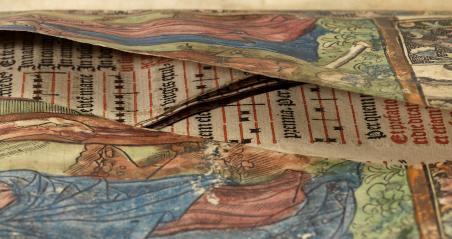
Contributors to Remembering the Reformation
This exhibition is a testament to the fruitfulness of collaborative work—not only among the members of our research team, but between our project and a number of research institutions and their staff.
The colourful heraldic devices in the Book of St Albans (1486) have long been celebrated as the first and only images printed in colour in England until the mid-1700s, when technical breakthroughs allowed pictures to be printed in colour on a commercial scale. The 250-year gap between these landmarks of the history of English colour printing has been explained with reference to the absence of colour printing technologies or austere Reformation tastes, for instance. But images were indeed printed in colour in England throughout the sixteenth century, circulating in perhaps thousands of individual impressions. Because all known examples are illustrations or visual elements in books and because there is no standard descriptive vocabulary for their colour printing, this printed colour has hidden in plain sight until now.
This is the first ever exhibition on colour printmaking in Tudor England (1485-1603). These brightly printed pictures transform our understanding of the spread of technologies of visual communication in the English Renaissance, and more generally, in early modern Europe. Each theme explores a different technical approach; each object provides another piece of the story. The exhibition presents aspects of Dr Elizabeth Upper’s research as the 2012/13 Munby Fellow of Bibliography. Access to the Library’s collections on the same terms as the members of its permanent staff, a unique feature of the Fellowship, allowed her to search for these vivid images in the thousands of sixteenth-century English books in the Rare Book stacks.